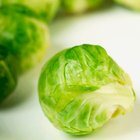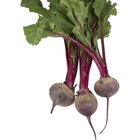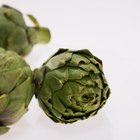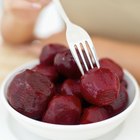tab1962/iStock/GettyImages
Take the time to blanch bok choy before freezing to ensure the best flavor and color later. Blanching before you freeze slows the natural enzyme action in the leaves that would otherwise cause them to become discolored and bitter upon thawing. Frozen bok choy, also called Chinese cabbage or pak choi, has loose heads of large green leaves, and is best suited to cooked dishes, such as a cooked green in Asian-influenced stir-fries and vegetable medleys.
Separate and wash the bok choy leaves in cool water. Trim off any wilted leaves and the tough stem ends of each leaf, then cut or tear the leaves to the desired size. For large heads of bok choy, cut off the white portion near the leaf base, as these don't freeze well.
Bring 2 or 3 inches of water to a full boil over medium-high heat.
Place the bok choy leaves in a steamer basket, and set the basket in the pot so the bok choy is sitting above the water. Place a lid on the pot and steam the bok choy for 3 minutes.
Remove the steamer basket from the pot and run cold water over the leaves in the basket until they are completely cool.
Shake the excess moisture out of the leaves and pat them dry with a paper towel. Pack the leaves into a storage bag, leaving 1 inch of headspace. Press out the air and seal closed. Store the bok choy in a 0-degree Fahrenheit freezer for up to six months.
Related Articles

How to Freeze Cooked Brussels Sprouts

Bok Choy Nutrition
How Do I Clean Water Cress?

How to Freeze Ramps & Wild Leeks

How to Cook Romanesco Broccoli
How to Cook Brussels Sprout Greens

How to Eliminate Bitterness in Broccoli

How to Cook Endives

How to Freeze Fresh Asparagus

How to Boil Celery

How to Parboil Artichokes

How to Cook Mixed Greens
How to Store Your Fresh Cut Kale

How to Cook Fresh Broccoli in a Slow ...
How to Clean and Cook Broccoli Rabe

How to Freeze Fresh Beets

How to Blanch Tomatillos

How to Freeze Romanesco

How to Cook Frozen Artichokes

How to Boil Beetroot
References
Tips
- If you don't have a steamer, boil the bok choy leaves in the water for 1 ½ minutes. Cool the leaves in a bowl of ice water before draining, drying and freezing.
Writer Bio
Jenny Harrington has been a freelance writer since 2006. Her published articles have appeared in various print and online publications. Previously, she owned her own business, selling handmade items online, wholesale and at crafts fairs. Harrington's specialties include small business information, crafting, decorating and gardening.